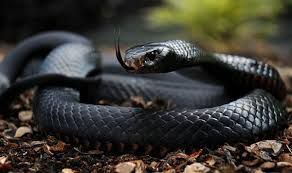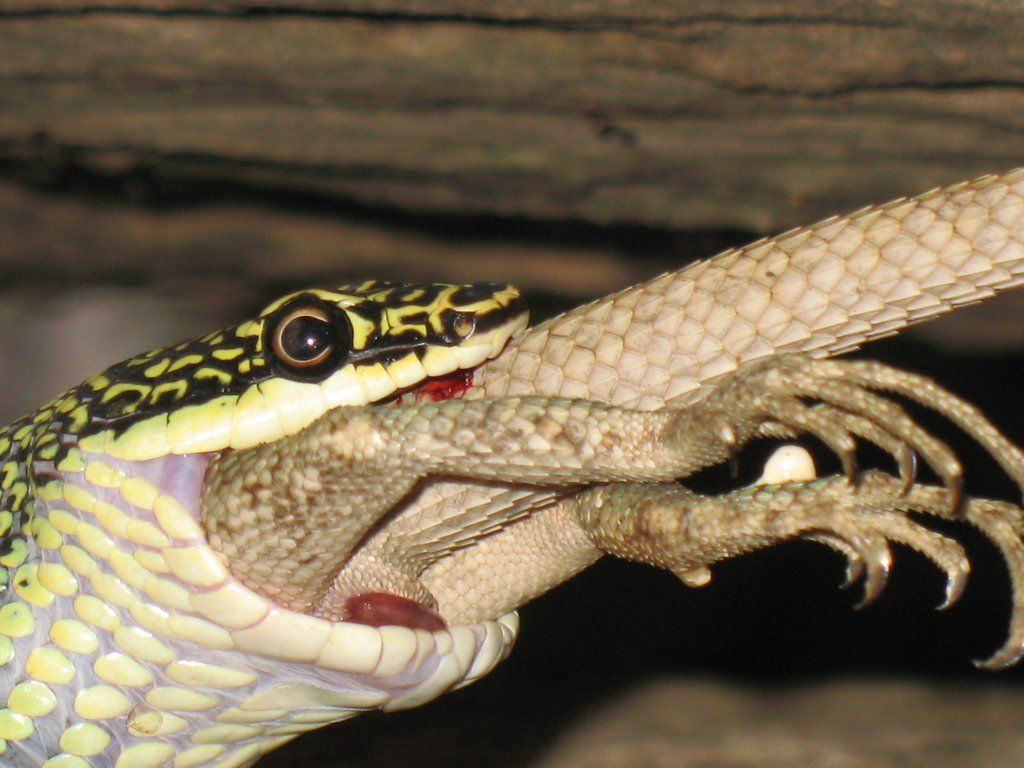Reptiles in our time
The historical world has a long history as the Earth is approximately 4600 million years old. According to scientists, approximately 4,700 million years ago the Earth did not yet exist; in its place, a huge cloud of dust and gas revolved around the Sun. Later it broke up into several small clouds. Ultimately, these clouds apparently formed the planets that now orbit the Sun. The Earth was also formed.
Since the formation of the Earth, the first living beings lived on the seas, there were very few of them because they were tiny. These creatures changed very slowly, and from them the first plants were formed, which also lived in the sea. There were no animals on Earth yet, since the planet lacked the oxygen necessary for breathing. With the formation of plants, oxygen was formed and animals first appeared in the sea and lakes. Over time, they developed sponges, annelids, trilobites/extinct/, jellyfish, crinoids, ostracoderms/extinct/, acontod fish/extinct/ cephalopods/extinct/, corals, gastropods/extinct/, eurypterids/extinct/, eusthenopterons and many others.
The earth's land was completely lifeless. Plants first reached land 400 million years ago. They grew in damp, swampy areas at the water's edge. Later, more resilient plants appeared and colonized the rest of the land.
The first animals to learn to live outside of water were fish with light and strong fins. Over many millions of years, they evolved, their fins turned into legs, and their lung capacity increased. They occasionally returned to the aquatic environment to lay eggs. They were called amphibians.
Around 280 million years ago, Earth's climate began to change again, becoming hotter and drier. Gradually, the swamps dried up, and most amphibians disappeared from the face of the planet. They were replaced by new animals. They had scaly skin. The eggs they laid were protected by a leathery shell. Such animals are called reptiles.
Reptiles, or, otherwise, reptiles, are a group of diverse animals. They have scaly skin and lay eggs in a hard shell. These are cold-blooded animals that are unable to regulate their body temperature. They laid their eggs in warm sand or in nests made from rotting vegetation. The shell reliably protected them from the hot rays of the sun, preventing them from drying out.
Reptiles that lived 200 million years ago include dinosaurs. The word dinosaur means "terrible lizard". They inhabited the Earth for approximately 135 million years, which is 70 times longer than the existence of humanity. A huge number of different species of dinosaurs lived on Earth, but not all of them lived at the same time. On this table we see when the most famous species of dinosaurs lived. The very first dinosaurs include:
- Faurosaurus - it had a length of 1 meter. It ate plants and moved on four legs, but if necessary it could run quickly on two.
- Coelophysis - it reached a length of 2 meters, walked on two legs, balancing while walking with its long tail. He had sharp teeth and ate meat.
- Plateosaurus - measured about 6 meters in length, ate plants.
- Listosaurus were animal-like reptiles that lived among swamps and ate plants. Their length was approximately 1.5 meters.
- Diadekt - from the nose to the tip of its long tail it was about 2 m. It ate plants.
- Saurocton - he was a ferocious predator, had long sharp teeth and hunted other animals.
- Euparkeria - it was 1 meter long and apparently was the ancestor of some dinosaurs.
- Thrinaxodon is a beast-like reptile with developed hair, but in all likelihood still laid eggs. It was about the size of a cat.
- Edaphosaurus - its length was approximately 3 meters. The bizarre “sail” on its back is formed by long bony processes covered with skin. Perhaps he used this sail to maintain the desired temperature of his body. In cold weather, he quickly warmed up by turning his sail in the direction from which the sun was shining.
Over time, other dinosaurs appeared:
- Stegosaurus - on its back it had large bony scutes that grew straight from its skin, and its tail was crowned with dagger-sharp spines. They resemble roofing tiles, which is why its name translates as “roofing lizard.”
- Apatosaurus - they were previously called brontosaurs. They lived in herds, so they were less vulnerable to predators. Their name means “deceptive lizard.” It was approximately 18 meters long and weighed 30 tons. His brain was smaller, relative to the size of his body, than that of any other animal.
- Brachiosaurus - it was the heaviest and tallest, weighing approximately 81 tons, that is, more than 20 elephants, and its height reached 12 meters, that is, it was the height of a two-story house.
Hypsilophodon - was 60 centimeters long, thanks to its long legs, it could run quickly, which allowed it to escape from predators.
Corythosaurus - It was a garitosaur with a head crest shaped like a helmet. This ridge consisted of bone tissue with air-filled channels inside that were connected to the animal's lungs. They are also called duck-billed dinosaurs because their jaws ended in a horny, toothless beak. With this beak they picked leaves from the trees.
Iguanodon was 5 meters high and ate plants.
Tyrannosaurus rex - which means “king of the tyrannosaurus”, was the largest predator, weighing 8 tons, reaching a length of almost 15 meters. They walked on their hind legs and could run quickly, chasing prey.
Triceratops was one of the horned dinosaurs, it had three horns, one on its nose, the other two above each eye. There was a huge bone collar around it. Its jaws ended in a beak; it fed on very tough leaves, so they had special teeth with a flat surface.
Some dinosaurs ate plants, they are called herbivores, while others, who preferred meat, were carnivores.
Herbivores, in order not to die of hunger, had to eat almost a ton of leaves per day. And carnivorous dinosaurs had long and sharp teeth that tore their prey into pieces.
About 65 million years ago, all dinosaurs suddenly went extinct. Along with them, pterosaurs and marine reptiles became extinct. Why this happened is unknown to paleontologists, but apparently they were unable to adapt to the changes that were happening on Earth at that time. During the era of dinosaurs, the climate was warm. However, about 65 million years ago, the Earth became cooler, especially in winter. At the same time, grandiose mountain-building processes began on the earth’s crust, dramatically changing the topography of its surface. Dinosaurs, being cold-blooded, needed the warmth of the sun. When their huge bodies got too cold, they took a very long time to warm up, and many died.
Nowadays, many different reptiles live on Earth. They are classified as reptiles. Reptiles include crocodiles, turtles, snakes, and lizards. Among them there are real giants like boas or elephant turtles, and there are also dwarfs - tiny geckos and lizards. They live in forests, deserts, mountains on all continents of the world / except Antarctica / and even in the oceans. But all of them have a body covered with horny scales that protect the skin, and all of them have short legs / and sometimes none at all /, so the animals crawl on the ground or in the sand.
One of the largest crocodiles is the gharial, its length reaches 6 and a half meters. It lives in the rivers of India and feeds on fish, which it deftly grabs with its long and narrow jaws. Unlike other crocodiles, it never attacks people.
Elephant turtles live off the coast of South America. The width of their shell is about 1 meter, and their weight is more than one hundred kilograms. They feed on grass and cacti, love to drink water and are never in a hurry. Now there are very few of them left. One of the largest turtles are sea turtles; their weight reaches more than one hundred kilograms. They live in tropical latitudes, swim and dive beautifully, using their flat front paws instead of oars. Once a year they swim to places known to them where there are sandy beaches. Having found a suitable place, the female lays eggs and buries them in the sand. And then they swim back into the ocean. The hatched turtles run to the water, and their nomadic life begins.
It's rare to see such a strange creature as a chameleon. It lives among thin branches, so on each paw it has three toes pointing inward and two pointing outward. It feeds on insects, so its eyes are very mobile and independent of each other. And to catch prey - a long sticky tongue. To protect itself from enemies, the chameleon quickly changes color.
One of the Australian lizards that lives in the hottest deserts of the continent is called moloch, which in ancient Phoenician mythology is a terrible all-consuming and insatiable deity. The reason for this was the bizarre appearance of Moloch: his entire body, including his head, paws and tail, is covered with long and sharp spines, giving him a truly terrifying appearance. But this is only an appearance. In fact, Moloch is a harmless and peace-loving creature whose only food is ants.
The only poisonous lizard is called the poison tooth. Its bite causes severe pain, but is not fatal to humans or large animals. Lives in the deserts of Arizona. This is a slow and sedentary animal with a bright and contrasting “warning” coloring, which is well known to all predators.
One of the large lizards is the monitor lizard. Some monitor lizards live in the sands of the desert, others have mastered the aquatic lifestyle, and others have found their place in the branches of trees. They are all predators and very large, about one and a half meters in length. Among them there is also a real giant: the Komodo dragon, which lives on the small islands of Komodo, Rinko and Padar in Indonesia, whose length reaches three meters and weighs up to 150 kilograms. Its main food is deer and wild pigs. There are known cases of attacks on people.
Iguanas are related to our lizards. Most of them are arboreal, but among them there are marine iguanas that live on narrow strips of coastal cliffs. They are up to one and a half meters long, a clumsy-looking creature with a characteristic crest along the back. They are excellent swimmers, and can swim hundreds of meters from the shore. They feed on seaweed.
We have many different lizards in Russia. These are the same nimble little creatures that often scurry from under your feet while walking through the forest or in the field. The most beautiful of them is the fast lizard. She lives wherever there is a lot of sun and dry soil with sand and sparse grass. In spring, males put on an amazingly beautiful green outfit that plays with colors like emerald. Females are chocolate with a delicate white pattern on the back.
While reading about reptiles, I learned a lot about them; about what types of reptiles lived and live, their habitats, what they fed and feed on, about their characteristics and much more. And in the future I will read and study a lot more about them.





No comments here yet.